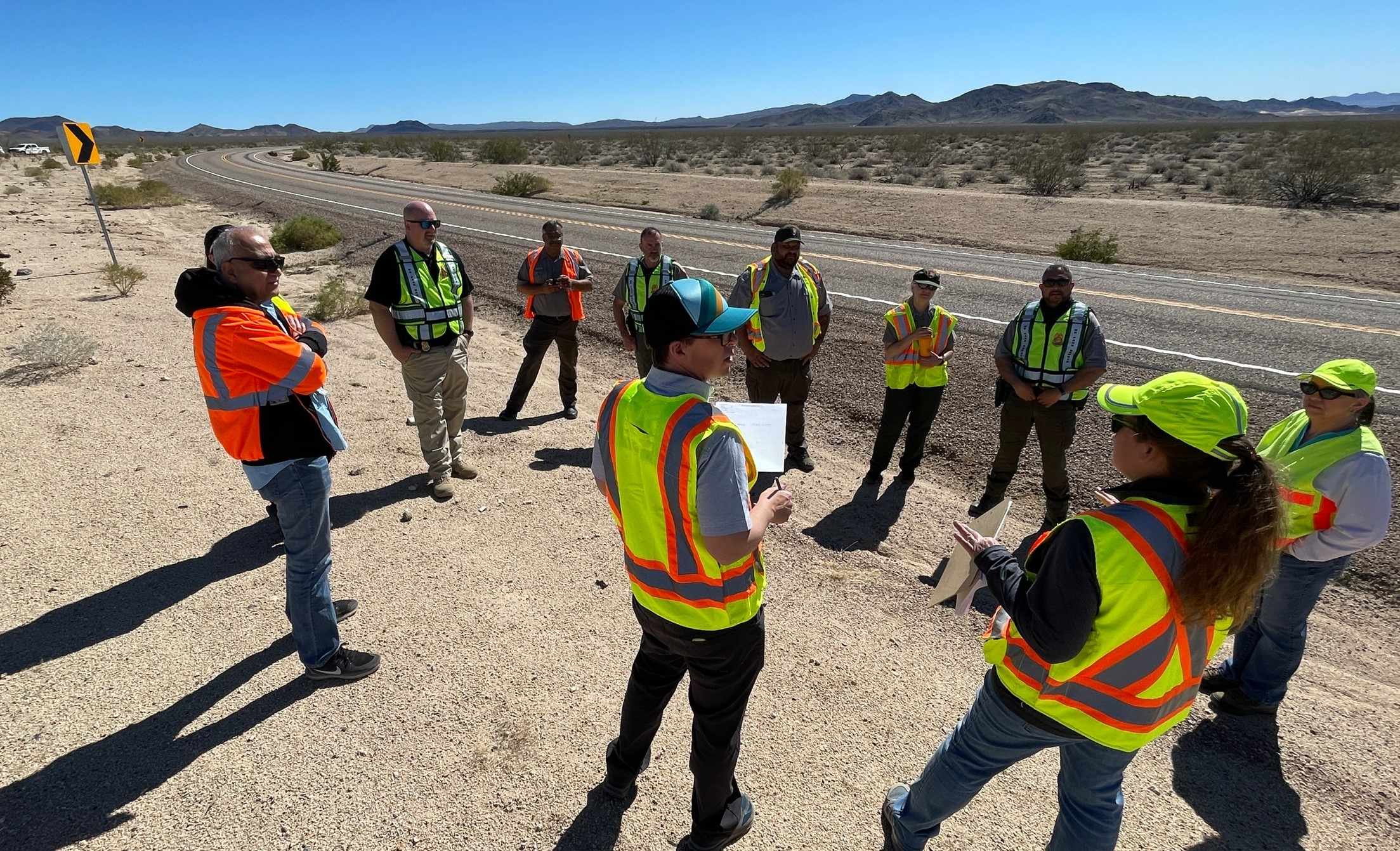
NPS Photo
National Park Service Transportation Safety Program
Overview
The National Park Service Transportation Safety Program (TSP) is a multidisciplinary, decentralized, and coordinated effort guided by an executive committee to reduce the number and severity of traffic crashes by ensuring that opportunities to improve roadway safety are identified, considered, implemented, and evaluated, as appropriate, during all phases of highway planning, design, construction, operation, and maintenance.
The TSP is responsible for the administration of the Transportation Safety Management System (TSMS) required under 23 USC 201(c)(5), 23 USC 203 (b)(2)(B)(III), and 23 CFR 970. The TSP includes the TSMS, as well as the people and processes throughout NPS related to the implementation of transportation safety countermeasures, operation of facilities, and maintenance of transportation infrastructure. Anyone at the National Park Service who finds themselves working to eliminate transportation related fatalities and serious injuries is considered part of the TSP.
Laws and Regulations
The following United States Code (USC) and Code of Federal Regulation (CFR) references guide the NPS transportation safety program:- USC References:
- 23 USC 201(c)(5): Federal lands and tribal transportation programs
- 23 USC 203 (b)(2)(B)(III): Federal lands transportation program
- CFR References:
- 23 CFR 970: National Park Service Management Systems
- 23 CFR 920.104: Definitions
- 23 CFR 970.204: Management systems requirements
- 23 CFR 970.212: Federal lands safety management system (SMS)
Data Systems and Crash Report Information
Department of Interior’s Incident Management, Analysis and Reporting System (IMARS) is the current system of record for all NPS law enforcement incident reports, including crash reports recorded in the Model Minimum Uniform Crash Criteria (MMUCC) compliant crash module. The NPS PFMD Transportation Branch manages a crash database called Crash Data System (CDS) that stores only non-personally identifiable information from crash reports for analysis and transportation performance management purposes, populated from a query of the IMARS database and from crash report data pre-dating IMARS. Non-personally identifiable information from crash reports and other transportation safety related information can be accessed through the NPS Navigator.The NPS Public Risk Management Program (PRMP) analyzes mortality data to identify trends, leading causes of death, and high-risk populations, including mortality data related to motor vehicle crashes, to guide and prioritize national level injury prevention efforts. NPS Mortality Dashboards providing synopses of death statistics reported in the NPS are made available on the NPS PRMP website.
Additional Resources
For more information please contact:
Wayne Emington, PE
NPS Transportation Safety Program Manager
e-mail us
- NPS Federal Lands Transportation Program
- NPS Public Risk Management Program
- USDOT National Roadway Safety Strategy
For more information please contact:
Wayne Emington, PE
NPS Transportation Safety Program Manager
e-mail us

Transportation Safety
FEDERAL LANDS TRANSPORTATION PROGRAM FACT SHEETMotor vehicle crashes are the second leading cause of unintentional fatal injuries in the National Park Service. On average, one person dies every week on NPS roadways. The key to improving long-term roadway safety lies in reducing crashes using data-driven and evidence-based strategies.
Last updated: September 9, 2022
